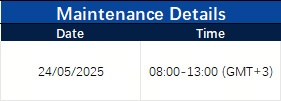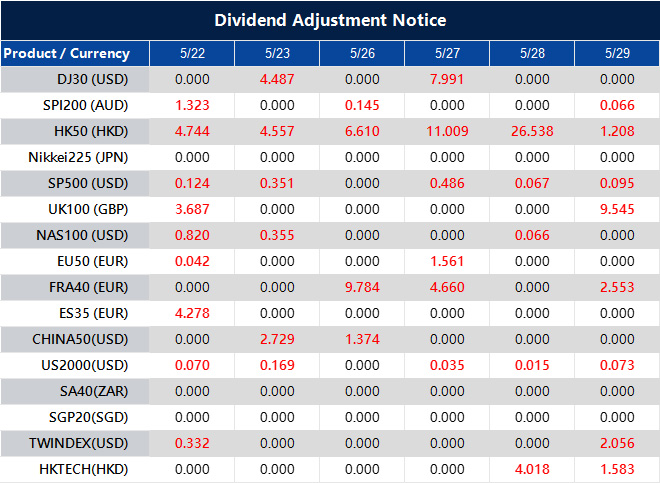The Australian Dollar (AUD) is slightly up against the US Dollar (USD) but has pulled back from earlier gains. This comes after the release of Australia’s initial S&P Global Purchasing Managers Index (PMI) data.
In May, Australia’s Manufacturing PMI stayed at 51.7. However, the Services PMI dropped from 51.0 to 50.5, and the Composite PMI fell from 51.0 to 50.6. The Reserve Bank of Australia reduced the Official Cash Rate by 25 basis points to handle inflation and indicated they might take further action if needed.
US Dollar Index Performance
The US Dollar Index has declined for the fourth consecutive session and is trading around 99.50. Investors are looking ahead to the S&P Global US PMI data, expecting stable growth in business activity for May.
There are ongoing developments in US politics and the economy. A tax-cut bill from President Trump is waiting for a House vote, amid economic concerns raised by the Cleveland and San Francisco Fed Presidents. The Atlanta Fed President warned about issues with trade logistics. Moody’s recently downgraded the US credit rating, predicting federal debt to rise by 2035.
US economic indicators show inflation easing, with both CPI and PPI revealing reduced price pressures. This has led to hopes for interest rate cuts in 2025. Weak Retail Sales numbers have heightened worries about a prolonged economic slowdown.
China criticized the US’s chip export measures, labeling them protectionist. The People’s Bank of China lowered Loan Prime Rates to support the market. Meanwhile, in Australia, the Labor Party regained power after the coalition collapsed.
Australian Dollar Against Other Currencies
The AUD/USD pair is currently around 0.6440, with support from technical indicators positioned above important moving averages. Resistance levels are seen at 0.6515 and 0.6687, while support is located at 0.6427 and 0.6367. A drop below these levels could challenge the March 2020 low of 0.5914.
Against other currencies, the AUD performed best against the New Zealand Dollar, while its performance was mixed against the USD, EUR, and CAD. The S&P Global Composite PMI data, based on surveys of executives, serves as an indicator of US private business activity. Traders are keenly awaiting upcoming data to understand market trends.
Today’s market shows the Australian Dollar holding on to a small portion of earlier gains against the US Dollar after the PMI figures. The Manufacturing sector has remained steady, but Services and Composite numbers have slightly decreased. These modest changes suggest a slight loss of momentum in Australia’s economy, which might be concerning for those investing in growth-sensitive assets.
The Reserve Bank’s decision to cut the Official Cash Rate by 25 basis points reflects their concerns about ongoing price pressures. Their message indicates that further reductions could happen if inflation remains a problem. For investors, this introduces the chance of further support for risk assets, while also raising the risk of a deeper economic slowdown if demand falls too quickly.
On the other hand, the US Dollar is under pressure, having dropped for a fourth session. The Dollar Index dipping towards 99.50 shows a decreasing appetite for safe-haven assets due to softer inflation data. Lower Consumer and Producer Price Index figures suggest easing cost pressures, which supports speculation that the Federal Reserve might cut rates in 2025.
The focus now shifts to upcoming US PMI numbers. If these figures show steady output from private companies, it could alleviate fears of contraction but also challenge expectations for rate cuts. Adjustments may be needed based on any positive surprises that could strengthen the Dollar and alter positioning, especially for those with a short USD bias.
In Washington, discussions around former President Trump’s tax policies continue, adding uncertainty to the near-term outlook. Concerns have been raised by multiple Federal Reserve branch executives about ongoing economic challenges, particularly from the Cleveland and San Francisco Fed Presidents. The Atlanta Fed President has pointed out disruptions in transport channels. These issues contribute to uncertainty and may increase market volatility. Additionally, structural debt concerns remain, with Moody’s downgrade of US sovereign credit highlighting long-term fiscal risks.
In Asia, tensions have escalated again. Beijing has accused Washington of limiting technological competition through chip export controls, keeping traders on edge in tech-related sectors. The People’s Bank of China has reduced its Loan Prime Rates to support domestic credit markets, providing relief to struggling areas of the economy. This introduces another loose policy element into the macro mix, affecting cross-border flows.
Back in Australia, political shifts have brought the Labor Party back to power after a coalition collapse, adding another layer of uncertainty around fiscal priorities and regulations. While this is not currently moving markets, it could influence sentiment depending on future policy signals.
Currently, the AUD/USD trades near 0.6440, supported by momentum indicators and remaining above short-term moving averages. Resistance is fairly close at 0.6515 and extends to 0.6687. A sustained dip below minor support levels at 0.6427 or 0.6367 could lead to prices not seen since early 2020. Heightened global risk aversion could increase this pressure quickly.
Of note with other currencies, the Aussie has strengthened most notably against the New Zealand Dollar, while its performance has been mixed against the USD, EUR, and CAD. Differences in policy directions, especially between central banks, may influence price action in the upcoming weeks. Observing forthcoming releases, particularly those related to services and labor markets, is crucial, as these may provide a clearer outlook than manufacturing data.
Moving forward, timing and execution will be key. Liquidity could thin out before significant macroeconomic updates, raising the likelihood of sharp intraday movements. While sentiment currently favors softer US data supporting the carry trade, this support relies on mild inflation and labor figures. Our focus is clear—monitor rates, follow policy discussions, and stay adaptable as technical levels come into play.
Create your live VT Markets account and start trading now.
here to set up a live account on VT Markets now






